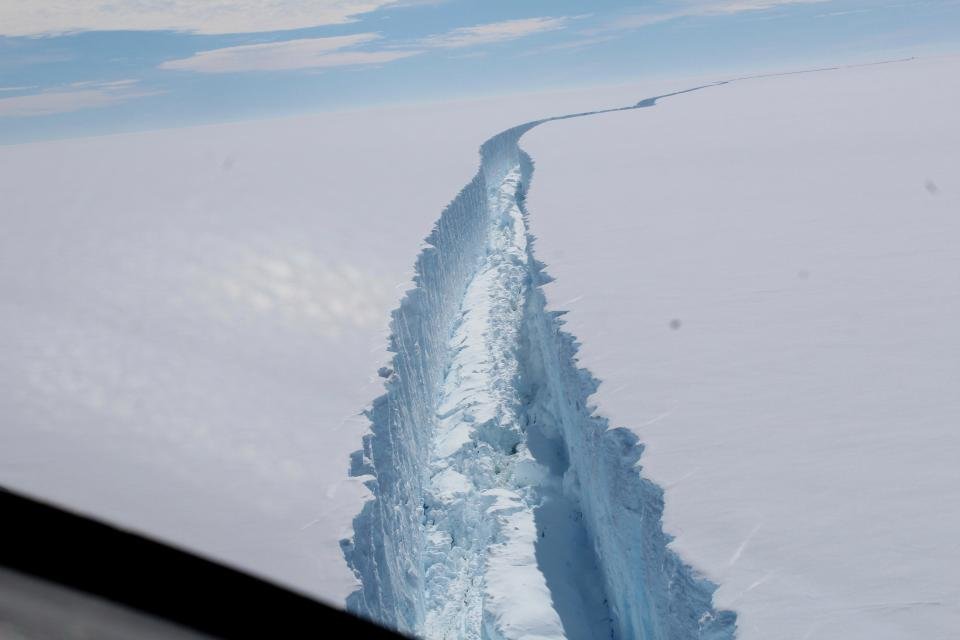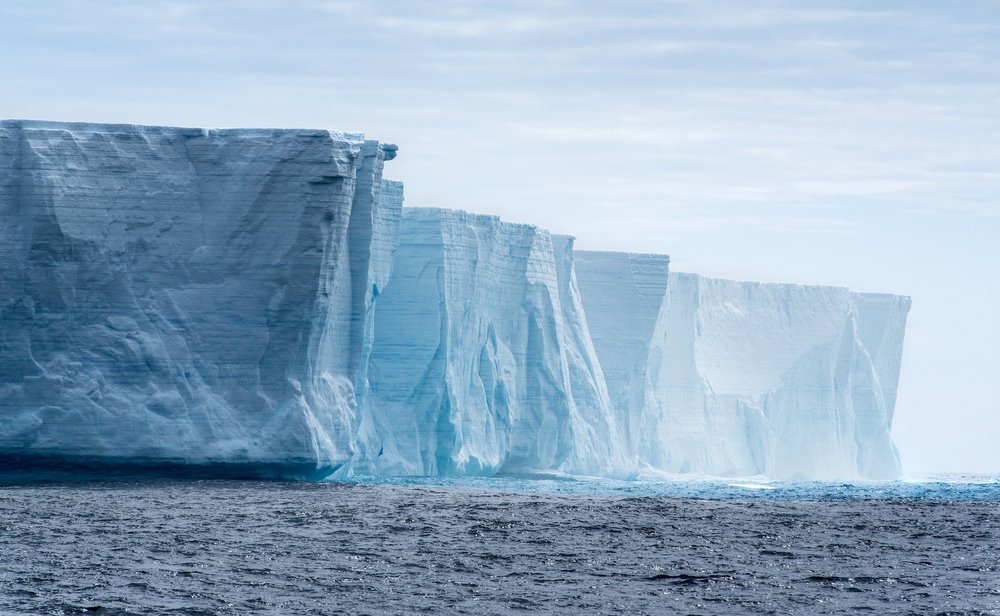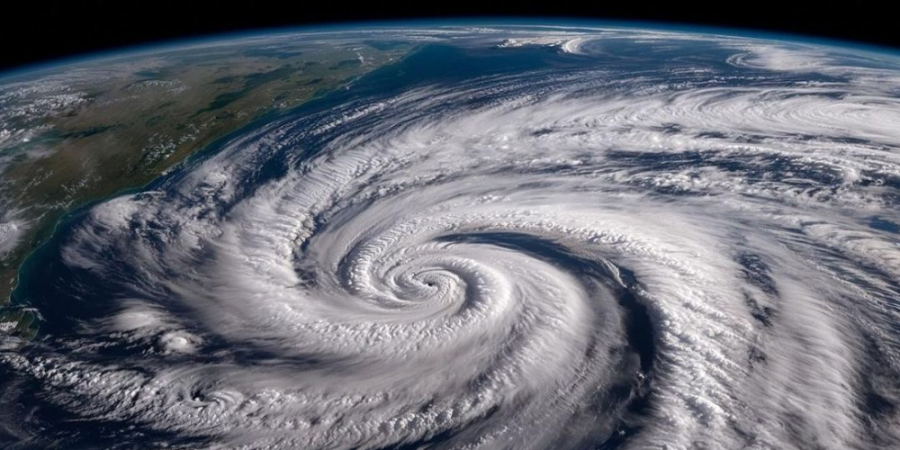Last year, a giant iceberg, weighing more than 1.12 trillion tons and roughly the size of Delaware, broke free from Antarctica, revealing a whole world of strange sea creatures buried underneath the Antarctic ice. Scientists are not rushing to study the alien ecosystem that has been frozen for more than 120,000 years.
An Iceberg Four Times the Size of London, Breaks off

The A68 iceberg captured a few days after it broke free
The first images of the giant iceberg, known as the A68, breaking free from the peninsula were first captured by NASA last summer. Scientists say that the breaking of the glacier is becoming a common occurrence due to global warming which is melting the ice at an alarming rate.
Breaking off of icebergs like A68 is also causing concerns about the safety of cruise ships that pass through South America and could potentially collide with these giant chunks of ice drifting aimless through the waters. Scientists are saying that there is a high chance that the remaining ice shelf in North Antarctica will soon collapse as well, revealing the water which has been trapped underneath for more than 120,000 years.
Researchers are now looking at the melting ice in Antarctica as an opportunity to study the ecosystem underneath the shelf and see what strange creatures lie on the seabed. The area exposed after A68’s separation spans over 6000 square kilometers – which is four times time the size of a city as big as London. Katrin Linse is a marine biologist who has been studying the underwater life during most of her career.
She is also the head of British Antarctic Survey’s exciting mission to explore the Antarctic ecosystem which had previously been shielded by an ice shelf with a thickness of hundreds of meters. Katrin says this is the first time that scientists will ever have a look at the marine life under the Antarctic ice and she is eager to find out what awaits her at the south pole.
A Race to Get to the South Pole

Linse is hopeful that she and her team of experts will be able to find new species under the ice that could reveal the history of evolution of marine life
It is a race among scientists to get to the Antarctic circle before summer arrives since sunlight could alter the environment under the sea and new species would begin to colonize there. BAS is currently putting together a team of their best scientists and marine biologists for a thrilling expedition that is expected to last for three weeks.
A research vessel will take the scientists from the Falkland Islands to the south pole at the end of February. But since the ship will be travelling to one of the most remote locations on the planet, it will require constant navigation from a satellite above.
David Vaughan, the BAS director, says that a lot of things could go wrong on the Antarctic mission since the area that they’re trying to get to will require a long journey, and the vessel will need to carefully navigate through the icebergs scattered everywhere in the Antarctic circle. But the mission they are on is extremely important since several researches in the past have hinted towards the existence of life under the Antarctic ice by drilling small holes in the ice shelf and putting cameras underneath.
A Potential Breakthrough in Marine Life and Climate Research

Over the three-week expedition, BAS aims to collect different samples of microorganisms from the newly-exposed area in the Antarctic circle
However, only a small area of the Antarctic sea has been studied till now due to limitations and certain starfish-like creatures have already been discovered underneath the shelf. But it is possible that creatures under the ice could be completely new species that scientists have never discovered before. This is the only chance the scientists have to study a 120,000-year-old ecosystem before new species inhabit the cold sea.
With the summer fast approaching, scientists are afraid that the sunlight will trigger the colonization of small creatures called phytoplankton which will change the dynamics of the marine food web and may cause more creatures from other parts of the Southern Ocean to come.
Besides marine biologists, the expedition will also include a team of climate scientists who will study the calving in Antarctica which is causing the ice shelf to break apart.










